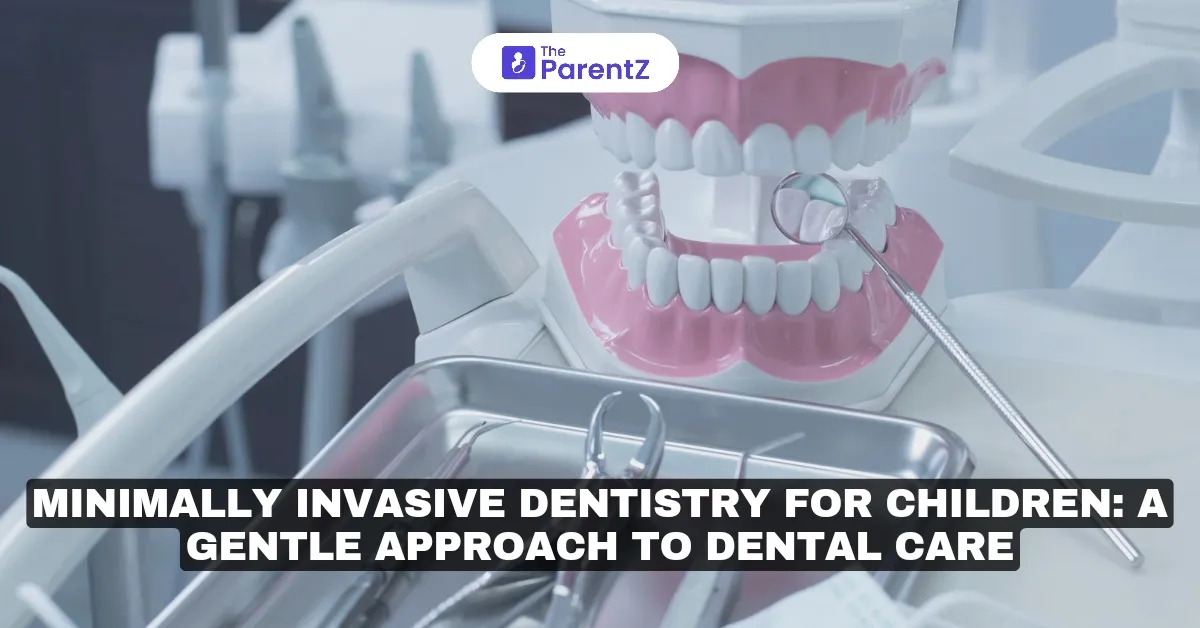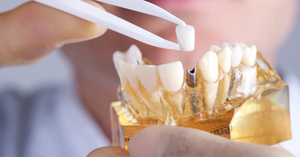Dental visits can be intimidating for children, especially when they associate them with discomfort or long procedures. That’s where minimally invasive dentistry (MID) comes in—a gentle, child-friendly approach that focuses on preserving natural tooth structure while providing effective treatment. The goal is simple: to prevent cavities, minimize discomfort, and reduce the need for extensive procedures in the future.
What Is Minimally Invasive Dentistry (MID)?
Minimally invasive dentistry focuses on using conservative techniques to treat tooth decay and other dental issues with minimal removal of healthy tooth structure. It emphasizes early detection, prevention, and the use of advanced materials and methods that require less drilling and filling.
Benefits of Minimally Invasive Dentistry for Children
1. Reduced Fear and Anxiety: Less invasive procedures mean a more comfortable experience for kids, reducing dental anxiety.
2. Preservation of Natural Teeth: By removing only the decayed portion of the tooth, the remaining healthy structure is preserved.
3. Faster Recovery: Less invasive treatments often require shorter recovery times and fewer follow-up visits.
4. Cost-Effective: Early intervention and prevention reduce the need for more expensive, complex procedures later.
5. Improved Long-Term Oral Health: Preventive measures and conservative treatments lead to stronger teeth over time.
Common Minimally Invasive Dental Techniques for Children
1. Silver Diamine Fluoride (SDF)
• What It Is: SDF is a liquid containing fluoride and silver that helps stop the progression of cavities without the need for drilling.
• How It Works: The silver kills bacteria, and the fluoride strengthens the tooth enamel.
• When It’s Used: Ideal for early-stage cavities, especially for very young or anxious children.
Tip for Parents: While SDF can stain decayed areas black, it’s a highly effective, pain-free option for preventing cavity progression.
2. Sealants
• What They Are: Thin, protective coatings applied to the chewing surfaces of molars to prevent cavities.
• How They Work: Sealants fill the grooves on the tooth’s surface, making it harder for food and bacteria to get trapped.
• When They’re Used: Typically recommended for children’s permanent molars soon after they erupt.
Do’s and Don’ts:
• Do encourage regular checkups to ensure sealants remain intact.
• Don’t skip brushing and flossing, as sealants protect only certain parts of the teeth.
3. Atraumatic Restorative Treatment (ART)
• What It Is: ART involves removing decayed tooth tissue using hand instruments instead of drills and filling the cavity with a tooth-colored material.
• How It Works: It’s a gentle, low-stress procedure ideal for children who fear the dentist.
• When It’s Used: Often used in cases where access to dental technology is limited or for very young children.
Tip for Parents: ART can be an excellent option for children in rural or underserved areas where dental care options are limited.
4. Air Abrasion
• What It Is: A technique that uses a fine stream of particles to gently remove decay without the need for a drill.
• How It Works: The particles are sprayed onto the tooth using a controlled air stream, removing only the decayed portion.
• When It’s Used: Effective for small cavities and early decay.
Why Kids Love It: It’s painless, and the absence of a drill means no scary noises!
5. Preventive Orthodontics
• What It Is: A minimally invasive approach to guiding jaw and teeth development to prevent more extensive orthodontic treatment later.
• How It Works: Techniques like space maintainers and habit-breaking appliances (e.g., for thumb sucking) help ensure proper alignment.
• When It’s Used: Often started in children as young as 6-7 years old.
Tips for Parents: Maintaining Your Child’s Oral Health
1. Start Early: Begin dental visits by the time your child turns one or when the first tooth erupts.
2. Encourage Proper Brushing and Flossing: Supervise your child’s brushing routine until they can do it properly on their own (around age 7-8).
3. Use Fluoride Toothpaste: A pea-sized amount of fluoride toothpaste helps strengthen enamel and prevent cavities.
4. Limit Sugary Foods and Drinks: Excess sugar increases the risk of tooth decay.
5. Promote Healthy Snacks: Encourage snacks like fruits, vegetables, and dairy products that promote dental health.
6. Regular Dental Checkups: Twice-yearly visits to the dentist help catch issues early and keep teeth healthy.
When to See a Pediatric Dentist
If you notice any of the following signs, it’s time to visit a pediatric dentist:
• Persistent tooth pain or sensitivity
• Discoloration or dark spots on the teeth
• Swollen or bleeding gums
• Difficulty eating or speaking
Early intervention can prevent the need for invasive treatments and ensure your child’s smile stays bright and healthy.
Explore More on the TPZ App
Check out other parent-friendly articles on the TPZ app, including:
A Note for Parents
Dear parents, we know that dental visits can sometimes feel overwhelming, especially when it involves your little one. With minimally invasive dentistry, you can rest assured that your child’s dental care is in gentle, capable hands. Keep up the great work—you’re doing amazing!
By staying proactive and informed, you’re giving your child the gift of a healthy, happy smile that will last a lifetime. Remember, it’s all about prevention, early care, and lots of encouragement along the way!








Be the first one to comment on this story.